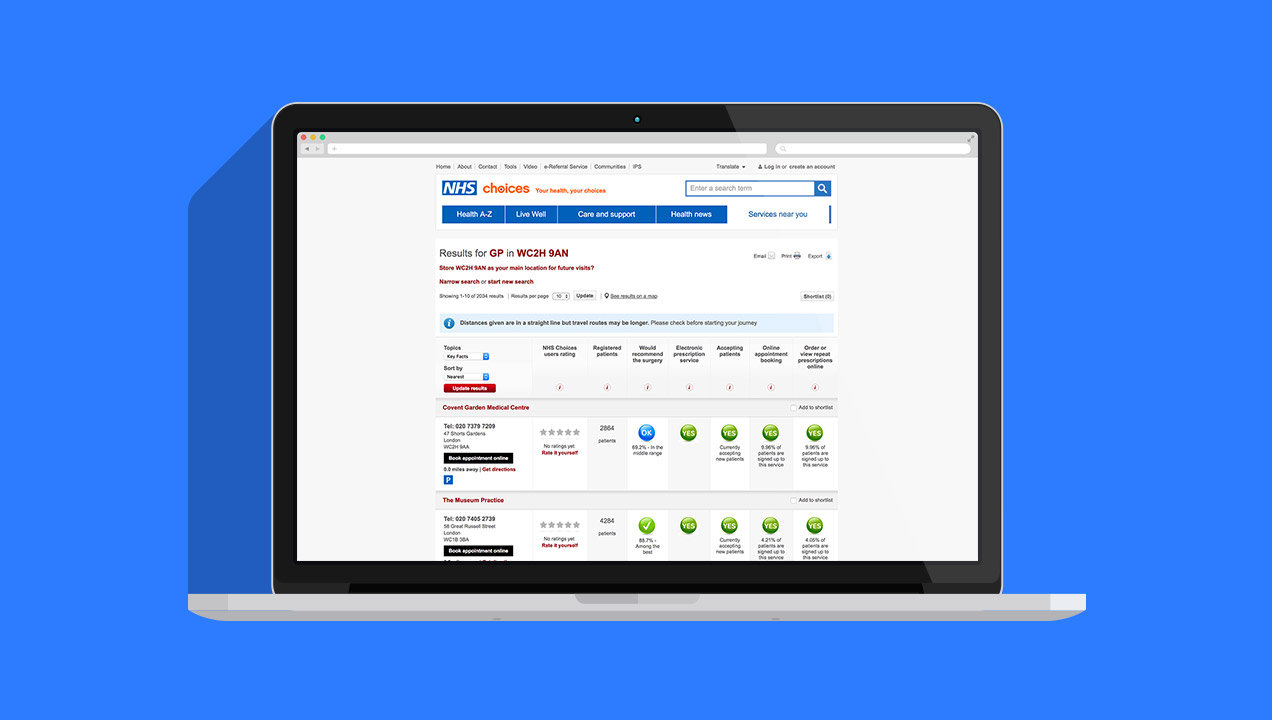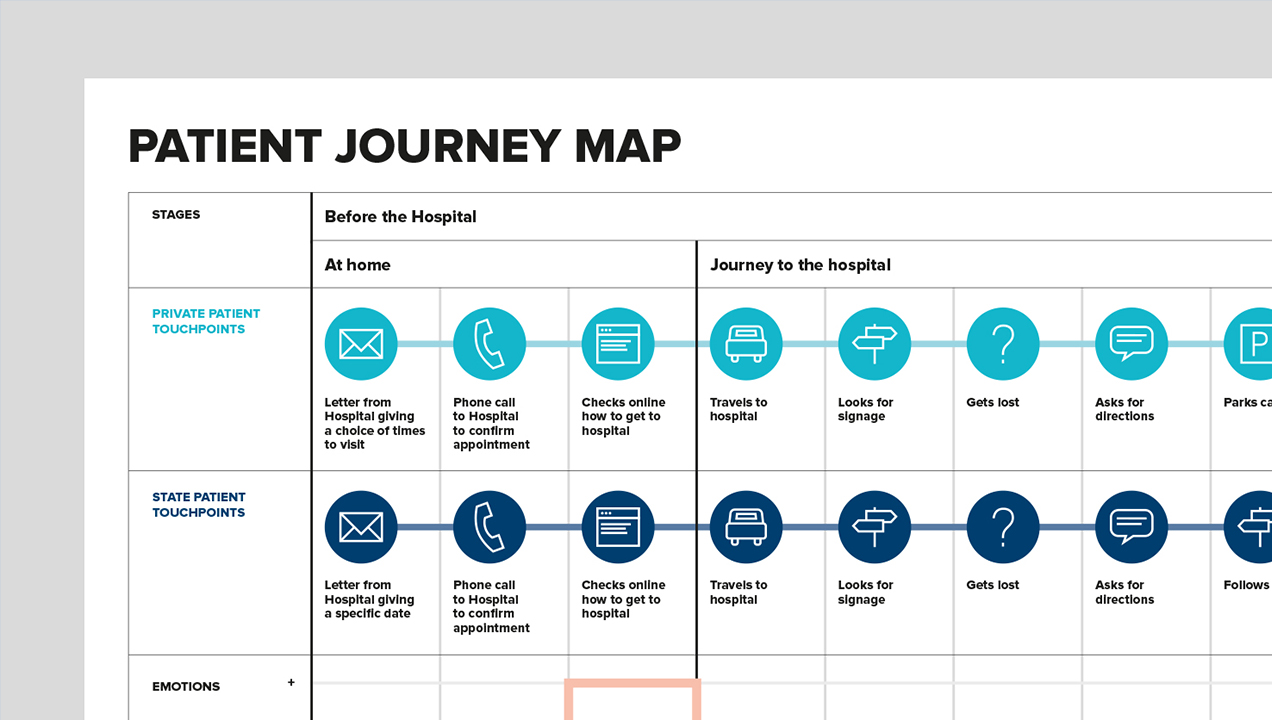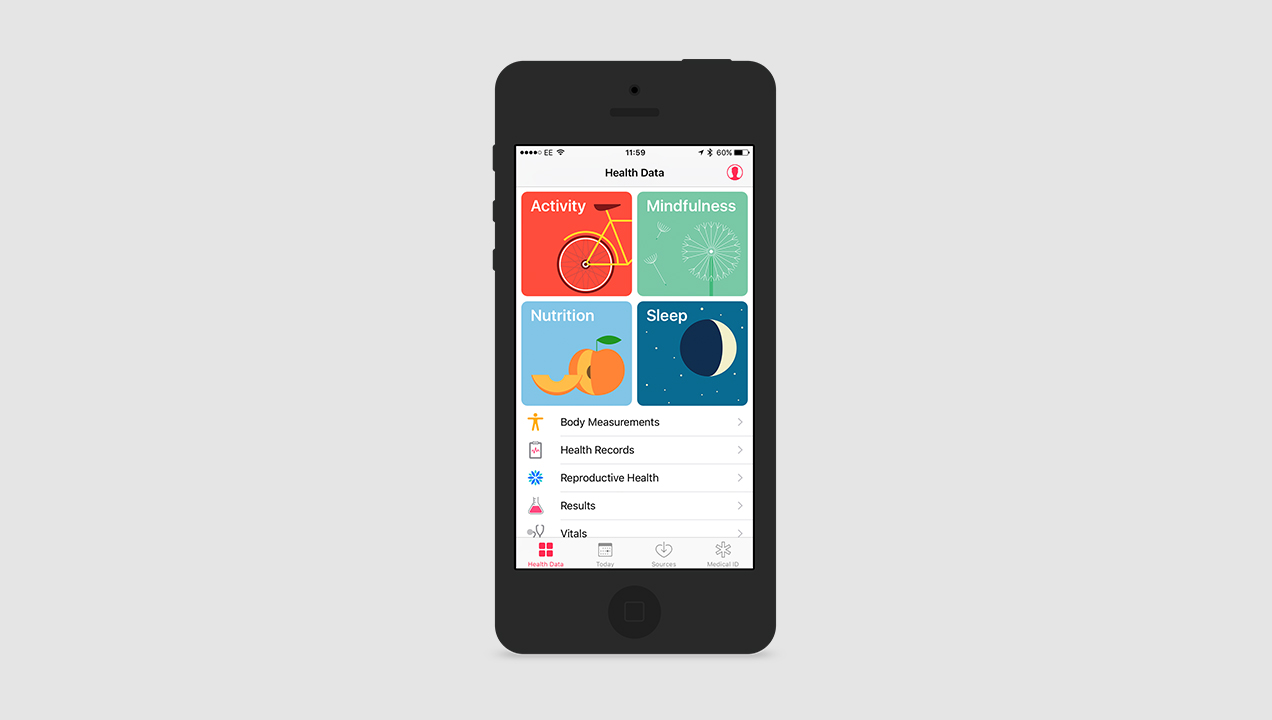Is Patient Experience Design a Game Changer for Healthcare?
The modern healthcare consumer, in markets beyond public health services like the NHS, lives a world of increasing mobile, digital and on-demand delivery. It’s a world where shopping around for the best health plan is only a Google away, and where patient decisions are heavily influenced by online reviews and social media. There is a global wave of ‘digitally empowered’ health consumerism has caused a lot of disruption within the traditional health insurance and care provider markets, and it means there is now a lot more emphasis on better patient experience design.

Understanding healthcare’s new consumers
The logical first step in designing for the new health consumer is customer journey mapping. This means capturing the full breadth of interactions between healthcare brands and their consumers, from the ease with which they sign-up with a health plan, to the way they relate to in-treatment customer experiences. Our mapping work has identified three key customer needs that are vital to create an effective ‘pro-patient’ culture.
1. Behavioral change for customers and providers
The healthcare industry is now recognizing the lifetime value of a customer, and retaining them for longer within the business. This necessitates a better understanding of customer behaviors and customer pain points by studying the role of all touchpoints where customers interact with the brand and optimizing experiences to become more seamless, secure, accessible and positive.
Developing a behavior-based understanding of the consumer journey requires a deep-dive qualitative research approach. Techniques like interviews, ethnographic filmmaking and diary studies will identify the unreported issues that traditional customer surveys can miss (and often do). Using a mix of quantitative surveys and qualitative field research enables you to define robust customer personas, the behavioral archetypes around which effective customer journey maps are produced.
In a study with a top 10 US health plan provider we identified that direct B2C marketing, the former mainstay of plan provider customer acquisition, was now heavily supplemented by prospective customers undertaking their own research online. It also highlighted the role of secondary reference groups (family, children and friends in social media) that affect provider selection. Self-researching behaviors were common to all personas, be them Medicare or Medicaid customers, or employee health plan beneficiaries faced with new opportunities to self-manage their workplace benefit health coverage.
This insight highlighted the need to provide more online customer education opportunities (like publishing questions to ask clinicians and supporting information); improving the efficacy of customer service call center staff with better real-time tools to track issues and access patient-specific information; and increasing the range of communications channels with live online chat and automated chat bots.
Developing a behavior-based understanding of the consumer journey requires a deep-dive qualitative research approach. Techniques like interviews, ethnographic filmmaking and diary studies will identify the unreported issues that traditional customer surveys can miss (and often do).
It also suggested there was a need for better ownership of the customer experience program by the client. It’s much easier to affect a better CX process if there is a single source of customer data rather than multiple systems for capturing feedback, especially customer service complaints. Connecting those internal data sources is an effective way to identify the areas where the provision of online information is underperforming, or lacking.

2. Omnichannel service delivery across all touchpoints
Understanding this general expectation of improved access to health plan information illustrates a key behavioral change in customer choice mechanisms when renewing health insurance or selecting a new care provider. It also pinpoints the training and service design needs to facilitate better sales and customer retention programs.
There is also a strong demand for customer-centered online tools that make it easier for customers to self-select plan options based on their needs and circumstances. These kinds of automated choice guidance tools have already proven very popular in other areas of insurance, and also in the financial services sector where dashboard-based brands like Wealth Manager deliver similar online guidance for pensions and investment fund selection.
Another important outcome of mapping health customer journeys is identifying the need to supply support material to the customer’s secondary reference groups, or ‘customer advocates’.
Another important outcome of mapping health customer journeys is identifying the need to supply support material to the customer’s secondary reference groups, or ‘customer advocates’. Videos and FAQs aimed at supporting family members can play a vital role in customer decision making, especially for older patients and care recipients. Optimizing this content for mobile delivery is, again, a basic requirement in the multi-device consumer environment.

3. Increased demand for personalized services
Greater personalization is something that all health plans and care providers need. Our studies indicate rising demand for user-friendly healthcare portals, where all aspects of the customer journey from plan management and billing to personalized diagnosis tools or access to patient clinical notes could be easily located.
There is also greater demand for interactive tools, time saving options like pre-registration forms, menu planning, scheduling tools and the ability to personalize visiting arrangements for family, especially for a patient’s carers and children. The takeaway of this research is greater personalization options go hand-in-hand with reducing customer effort, and increasing customer satisfaction.
The future of the pro-patient healthcare sector
Mapping healthcare consumer journeys is vital for adapting healthcare plans and clinical provider processes around healthcare’s new consumers. Beyond that, is also helps to shape the roadmap for future service development. Creating data-supported roadmaps is fast becoming a commercial necessity in the healthcare sector, because the costs of acquiring new healthcare customers is between four and five times the cost of retaining existing ones through smarter experience design programs. In the light of our research, we gained an insight into the near future of healthcare experiences:
- Greater education for customers and their influential secondary referrers.
- Enabling more integrated customer experience programs across entire organizations.
- Expanding the range of communications channels and empowering customer services through technology to become more effective.
- Enabling omnichannel delivery for educational material, enrolment, account management, billing and renewals.
- Automated choice guidance for financial support and providing greater self-diagnosis tools.
- Personalized patient dashboards for added-value services like pre-registration, menu planning and scheduling options.
Beyond these acute needs there is another customer-centric retention tool, still in its infancy, namely healthcare loyalty programs. There is a lot of scope to encourage better wellness for plan recipients, reducing the costs of plan membership by incentivizing healthy living. This includes initiatives like improving customer wellness education and offering the gamification of ongoing home therapy for conditions like strokes or falls when patients leave the clinical setting.

We have also seen the rising role of wearable technology in the European health plan market, using personal fitness data from customers to offer rewards for healthy living and active lifestyles. This kind of personalized loyalty scheme is built entirely upon understanding the role of technology in the customer journey and the affect it has on customer behavior.
Mapping customer journeys, in all their multichannel complexity, is an effective tool for increasing the life expectancy of healthcare businesses.
Increasingly, we should expect healthcare products to leverage the opportunities new technology provides. Keeping an eye on emerging consumer technologies is crucial, for example we’ve worked on projects exploring VR as a therapeutic tool in the treatment of mental health, supporting cognitive behavioral therapy (CBT) practice. In clinical settings, we’ve also seen increased use of AR to visualize biometric data during clinical consults. Like the Apple Watch and iHealth, emerging hardware-software pairings help to predict the direction of travel for tomorrow’s pro-patient healthcare experiences.
The road to developing a pro-patient culture still has a way to go, but it is an indicator of the health of the healthcare market that patient experience design has become a central theme of service development, a strategic response to rising consumerism and the commercial risk of services becoming commoditized in the digital age. Mapping customer journeys, in all their multichannel complexity, is an effective tool for increasing the life expectancy of healthcare businesses.
A version of this article was first published by our colleagues in Healthcare.
